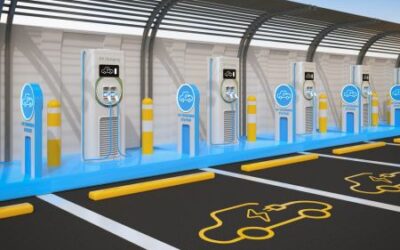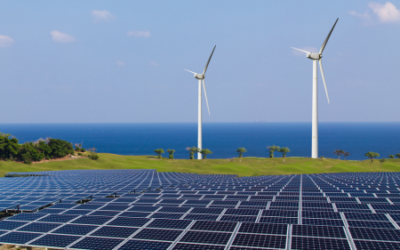
Transportation leaders have hoped for years that Congress would pass an infrastructure bill, and there was optimism that possibly billions of dollars for infrastructure projects might be allocated. While some progress has been made, chances for billion-dollar infusions of cash for transportation projects seem less likely. As a result, numerous pilot programs and studies related to revenue generation are occurring, and there is evidence of a major trend that is developing.
Revenue from gasoline taxes has been the primary funding source for transportation infrastructure, but that revenue is no longer adequate. Automobiles consume less gas than did vehicles in the past. It has been obvious for some time now that new funding sources would be needed. Tolling has not been popular, and it is likely that new regulations designed to generate transportation revenue also will not be viewed positively. But, road repairs and expansion and bridge and tunnel maintenance are long overdue in every state.
Bold leaders are stepping up to find alternative funding sources. The following provides a quick overview of how many states are planning to pay for the new and much-needed transportation infrastructure projects.
Wyoming
House Bill 37, sponsored by a legislative committee, proposes the creation of a system of road user charges. The bill, introduced recently in the 2021 legislative session, outlines a tiered system of user charges for vehicles based on per-mile rates. The revenue collected would be used by the Wyoming Department of Transportation to erase an annual funding shortfall of $135 million.
Oregon
The Oregon Department of Transportation also has launched a Local Road Usage Charge Pilot Program. The objective of this program is to gather data for three potential funding models: area-boundary pricing, layer-area pricing, and corridor pricing. Oregon is not alone in testing driver charges. The states of Utah and California are conducting pilot programs as state leaders seek new funding for departments of transportation.
Washington State
State leaders in Washington are considering a $26.7 billion, 16-year plan that calls for increasing the gas tax by 18 cents to 85.8 cents a gallon. The increase would move Washington’s fuel tax from the fourth-highest tax rate in the nation to the highest. Legislators are considering a carbon tax and clean fuels program to generate transportation infrastructure funds. The plan under consideration would allocate $8.2 billion for carbon-reduction initiatives, such as electric ferries and buses, mass transit, and bike lanes, and it would provide $3.5 billion to replace culverts, a mandate from the U.S. Supreme Court. The remainder of the funding would be used for major transportation projects and replacement of the Interstate 5 bridge over the Columbia River.
Massachusetts
The governor of Massachusetts signed a new $16 billion transportation bond bill on January 15. that authorizes the state to borrow money to finance ongoing transportation projects. The revenue will be used for bridge repairs, road improvements, and public transit initiatives. Projects to be funded include the Green Line extension for $595 million and South Coast Rail for $825 million. The legislation replenishes the state’s transportation bonding authority ahead of the upcoming construction season. A $1.25 billion portion of the bond will support the Next-Generation Bridge Program, and $350 million will be used to improve roadway approaches and related enhancements near the Bourne and Sagamore bridges that connect to Cape Cod.
North Carolina
The contract for a $298 million northern section of the Hampstead Bypass will be awarded by the North Carolina Department of Transportation (NCDOT) in January 2022. This project is one part of the work that is planned to connect N.C. 210 to U.S. 17 North. Work on the southern part of the NC 210 project will begin in future years. A $100 million project to widen parts of N.C. 211 to four lanes will begin late in 2021.
Michigan
Genesee County officials have added a $700 million bridge reconstruction project to the 2045 Long-Range Transportation Plan. The Michigan Department of Transportation (MDOT) will oversee all parts of the project, and the county has started accepting public comments. Input is sought related to reconstruction of parts of interstates 75 and 69, replacement of bridges, and modernization of the area where the highways connect. The state will fund a Planning and Environmental Linkages (PEL) study started to determine hurdles that could be encountered.
Georgia
Construction should begin on the Rome-Cartersville Development Corridor by 2023 to connect US 411 and Interstate 75. Preliminary engineering for the project has an estimated cost of $2.1 million, and right of way acquisition costs are projected to be $4.8 million. The Georgia Department of Transportation (GDOT) has set aside $7.4 million for FY 2022, and total construction costs of the project are currently estimated at $109 million.
Texas
The city of Mission has a proposed letting date of June 2021 for the first phase of a $6 million construction project that will expand Taylor Road into four lanes in two directions and add a left turn lane. The second phase of the project is twice the size of the first, and it will cost approximately $19.5 million. The metropolitan planning organization in South Texas will provide cost estimates and determine the revenue distribution projections for nearby municipalities.
Kansas
The U.S. 69 corridor is one of the state’s busiest four-lane highways, and heavy congestion peaks significantly during morning and evening rush hours. Hoping to alleviate the traffic snarls, the Kansas Department of Transportation is seeking input and gathering data on a project to expand U.S. 69. The question of high concern, however, is how to fund the project. A potential study will evaluate whether an express toll lane is an option. Other improvements to U.S. 69 may include the addition of a single lane in each direction, and there is the option of tolling the new lanes. Funding collected from the express lanes would be used to pay Overland Park’s portion of an estimated $300 million construction cost.
These are interesting and challenging times, and Congress is being asked to fund COVID recovery, provide programs to generate job creation, find revenue to send to cash-strapped cities, counties and school districts, and provide financing to reverse the nation’s crumbling infrastructure. It is obvious that our country not only must change the way it funds transportation projects but it also must amplify its efforts.
SPI’s government contracting consultants have decades of experience and personal relationships at all levels of government. Learn how they can help your company grow your business by contacting them today.






